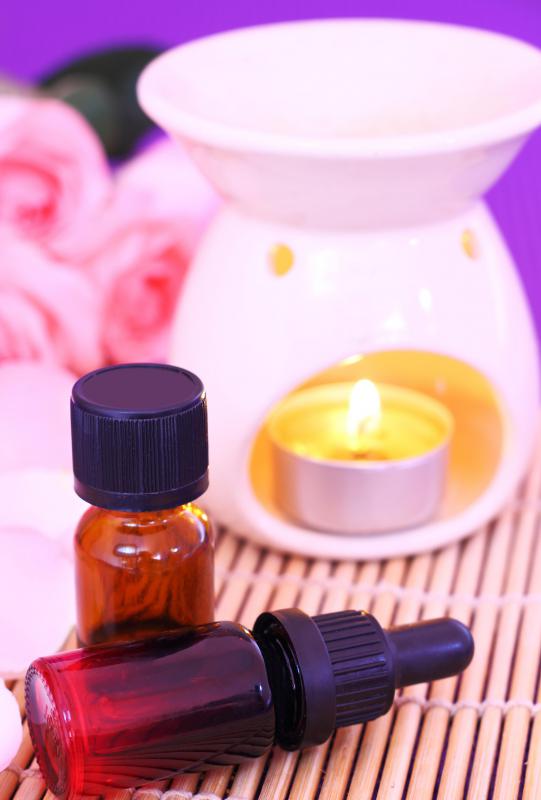At WiseGEEK, we're committed to delivering accurate, trustworthy information. Our expert-authored content is rigorously fact-checked and sourced from credible authorities. Discover how we uphold the highest standards in providing you with reliable knowledge.
What is Mentha Piperita?
Mentha piperita, more commonly known as peppermint, is a hybrid of spearmint and watermint used as a culinary flavoring and traditional herb remedy. The plant originated in England in the late 1700s, probably due to accidental hybridization, and has been cultivated ever since. Peppermint grows wild in temperate regions of the world where the soil is moist, usually near streams and drainage ditches.
An herbaceous perennial, Mentha piperita reaches up to 35 inches (88.9 centimeters) in height and produces dark-green, fragrant leaves covered in fine hairs. Peppermint also produces whorls of small, purple flowers around its slightly hairy stems in mid- to late-summer. Because it is a hybrid, the plant produces no seeds, but spreads through its extensive underground network of rhizomes.

The plant's leaves and essential oil, obtained through steam distillation, are both used for medicinal and culinary purposes. Peppermint leaves contain between 1 and 3 percent essential oil, and around 50 percent of the oil is composed of menthol. The herb's leaves also contain flavonoids, or antioxidants found naturally in plants that may trigger natural enzymes that fight disease when consumed. The exact proportions of active ingredients vary depending on the growing location and variety, but all peppermint plants contain beneficial flavonoids and essential oil in their leaves.

The most common medicinal use of Mentha piperita is aiding digestion. The plant's dried leaves are typically made into a tea or infusion for treating gas, indigestion, menstrual cramps, diarrhea, flatulence, nausea and gastroenteritis. Peppermint oil and flavonoids found in the leaves both increase the production of bile, which helps validate the herb's traditional use as a digestive aid. Other uses of peppermint leaves include the treatment of insomnia, headaches, nervousness, morning sickness, colic, muscle spasms, rheumatism, motion sickness, fevers and colds.

Mentha piperita oil is also used medicinally for a variety of purposes. When added to hot water, the menthol-rich vapors are inhaled to relieve congestion. Peppermint oil is sometimes added to cough lozenges to soothe the throat during a cold. When applied topically, the oil is believed to relieve sore muscles and joints, and to soothe dry, itchy skin.

Peppermint is a popular culinary flavoring commonly used in ice cream, candy, chewing gum and even baked goods. Used in soaps and shampoos, Mentha piperita produces a minty scent and provides a cooling sensation to the skin. In aromatherapy, peppermint oil is believed to invigorate the mind, improve the mood and relieve tension or anxiety. The plant's essential oil is also used as a natural pesticide in some commercial products.

Peppermint tea is made by steeping 1 to 2 tablespoons (14.79 to 29.57 milliliters) of the dried leaves in 2/3 cup (157.73 milliliters) of boiling water for 5 to 10 minutes. Three doses can be taken per day for as long as necessary to relieve digestive problems. Peppermint essential oil should not be taken internally unless under medical supervision, as the substance may be toxic if too much is consumed. Pregnant women should not consume Mentha piperita in any form, as it may stimulate menstrual bleeding. Individuals suffering from hiatal hernia, gallstones or blockage of the bile duct should also avoid peppermint, as it may aggravate these conditions.
AS FEATURED ON:
AS FEATURED ON:
















Discuss this Article
Post your comments